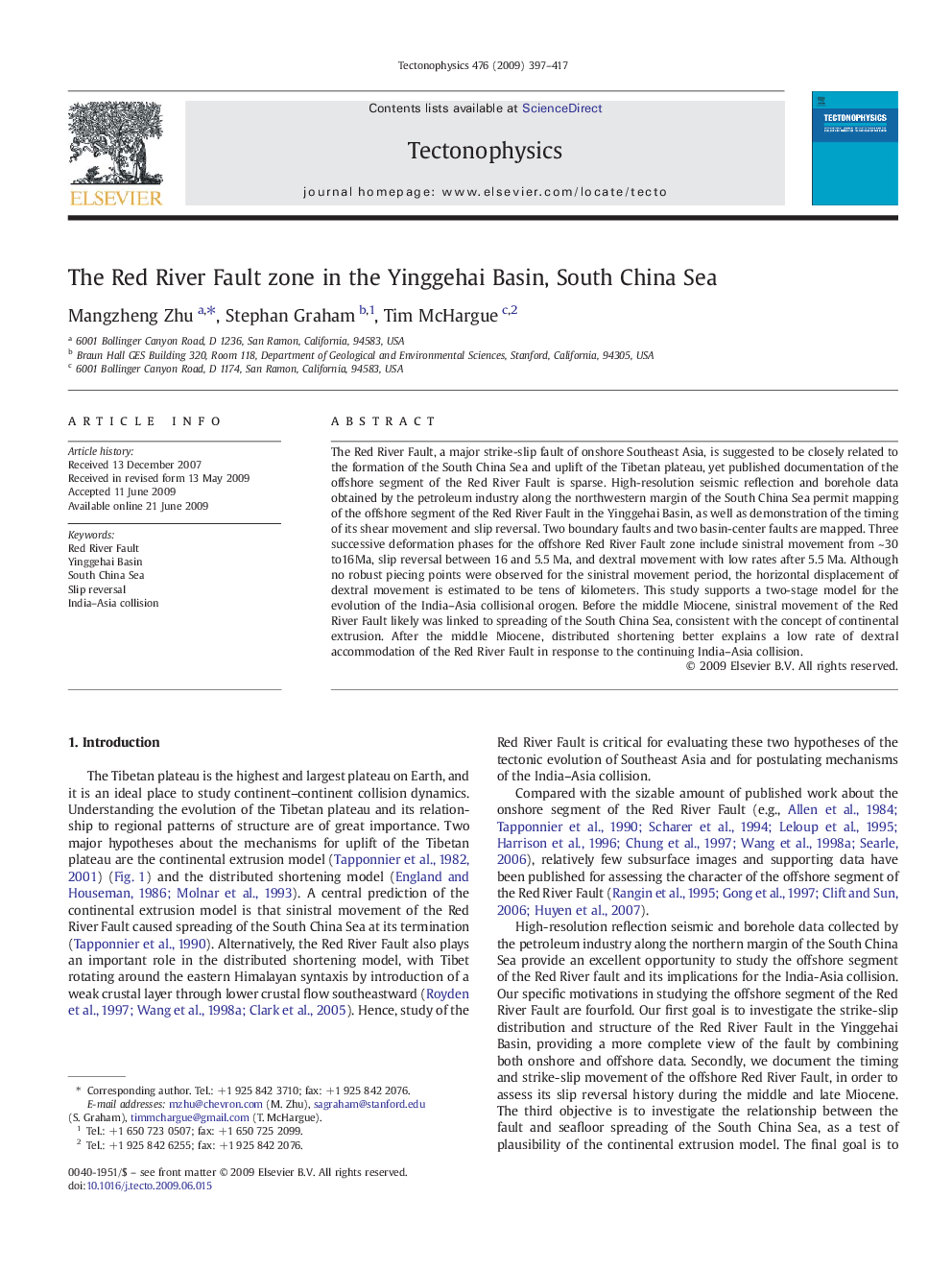| Article ID | Journal | Published Year | Pages | File Type |
|---|---|---|---|---|
| 4693975 | Tectonophysics | 2009 | 21 Pages |
The Red River Fault, a major strike-slip fault of onshore Southeast Asia, is suggested to be closely related to the formation of the South China Sea and uplift of the Tibetan plateau, yet published documentation of the offshore segment of the Red River Fault is sparse. High-resolution seismic reflection and borehole data obtained by the petroleum industry along the northwestern margin of the South China Sea permit mapping of the offshore segment of the Red River Fault in the Yinggehai Basin, as well as demonstration of the timing of its shear movement and slip reversal. Two boundary faults and two basin-center faults are mapped. Three successive deformation phases for the offshore Red River Fault zone include sinistral movement from ~ 30 to16 Ma, slip reversal between 16 and 5.5 Ma, and dextral movement with low rates after 5.5 Ma. Although no robust piecing points were observed for the sinistral movement period, the horizontal displacement of dextral movement is estimated to be tens of kilometers. This study supports a two-stage model for the evolution of the India–Asia collisional orogen. Before the middle Miocene, sinistral movement of the Red River Fault likely was linked to spreading of the South China Sea, consistent with the concept of continental extrusion. After the middle Miocene, distributed shortening better explains a low rate of dextral accommodation of the Red River Fault in response to the continuing India–Asia collision.
